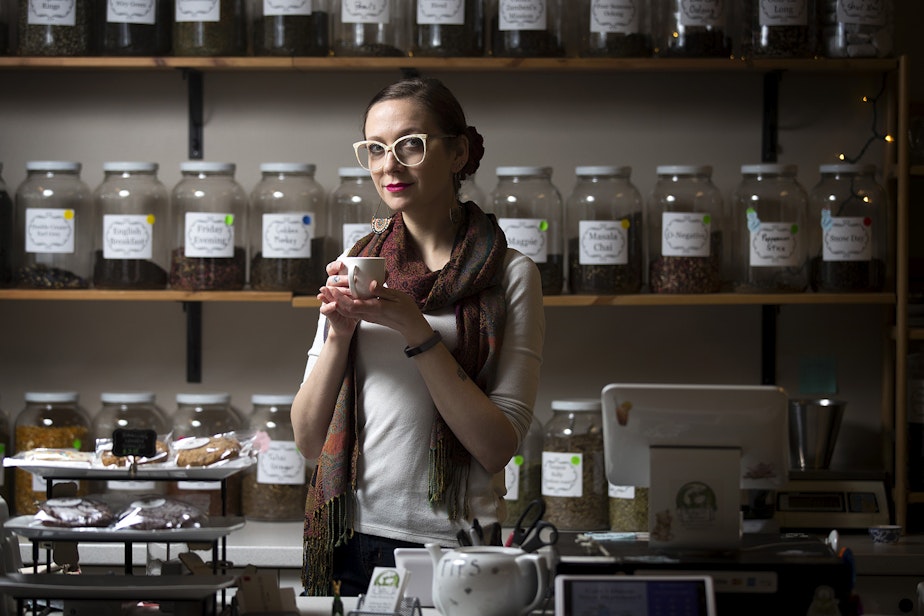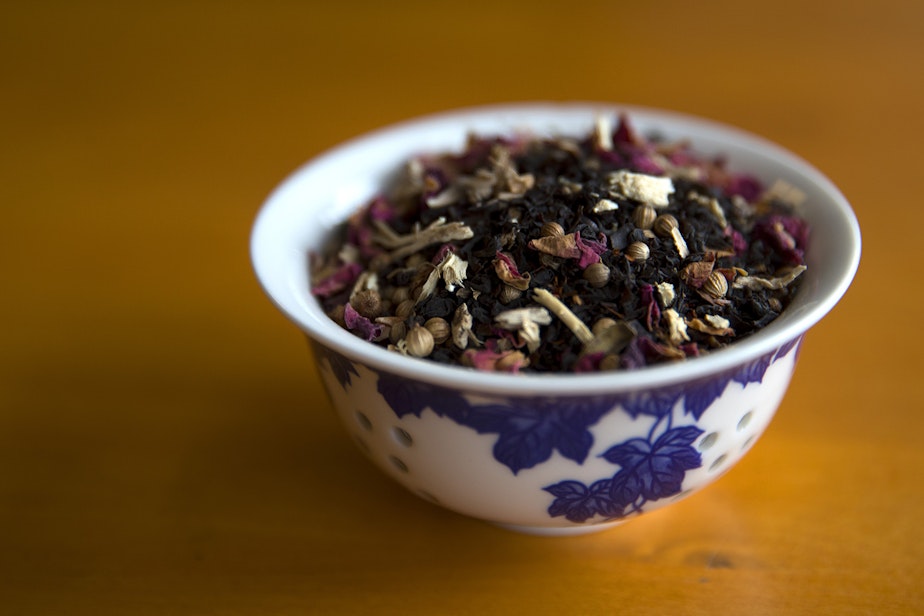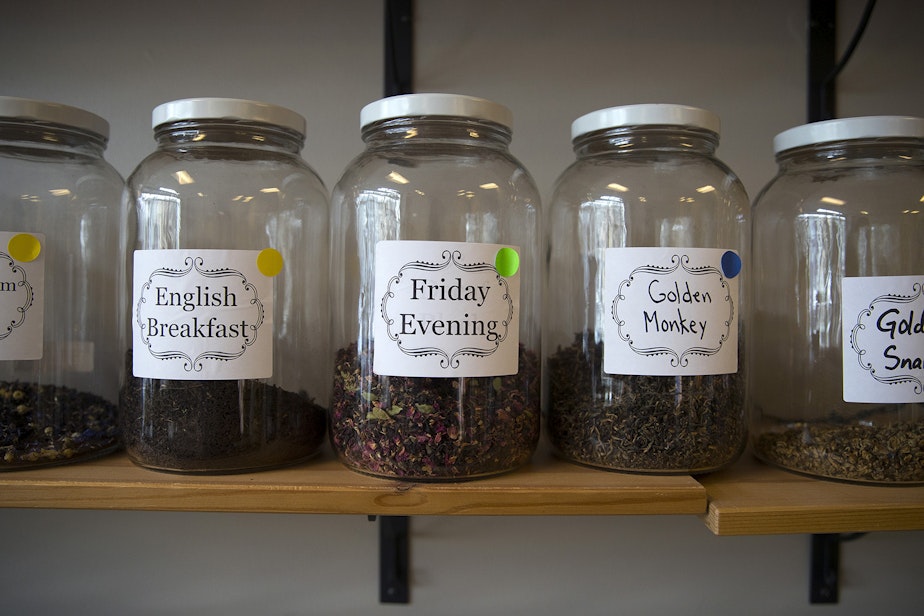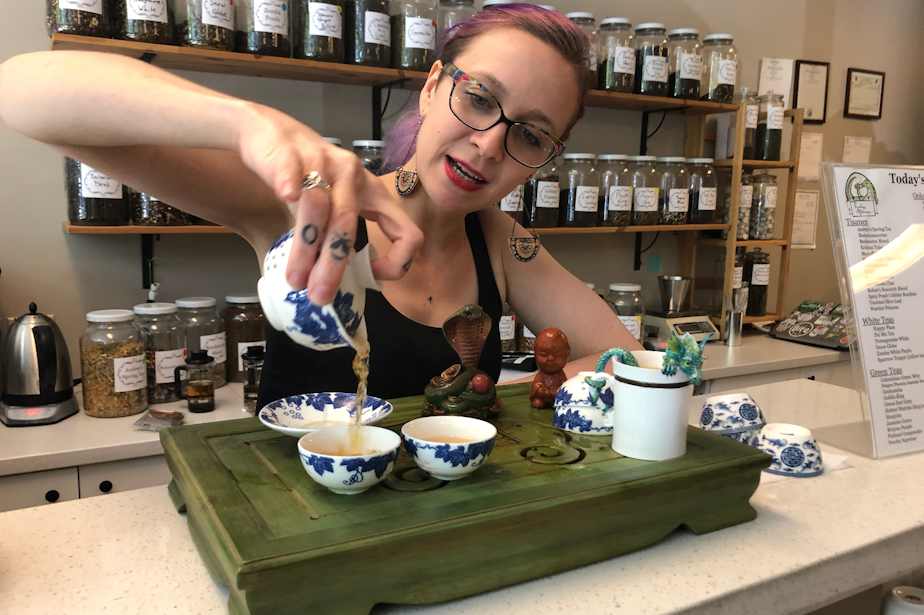This Seattle woman brews a cup of tea that tastes like the Red Wedding scene from Game of Thrones

Friday Elliott does not like The Beatles. To her, the music feels like sharp, poky grass.
“We called it cutting grass as kids because if you run into it, it can give you paper cuts – it feels like that,” she said.
That description is not a metaphor. For Elliott, the sound of the Fab Four produces a physical sensation and it is not pleasant. This is because she has synesthesia: a blending of the senses.
“Listening to the Beatles immediately stresses me out because it is physically very uncomfortable,” she said.
So, she is more of a Rolling Stones fan.
Folks may have heard about synesthesia from musicians such as Pharrell or Billy Joel, who say that when they hear a note, they also experience a color. When their brains process the sound of a D flat, for example, they might also be processing the color blue. Others, such as actor Geoffrey Rush, say they experience colors when they read words.
People with synesthesia often experience more than one form of it. This is true for Elliott, who has learned to use her unique forms of synesthesia to make tea blends based on pop culture -- books, movies, and more.
At Friday Afternoon Tea in Wallingford, customers come for a taste of Harry Potter or Battlestar Gallactica. Perhaps Super Mario Bros. is more your cup of tea. If not, try a blend for David Bowie.

Elliott tastes words, images, sounds, and so on. When she watches Star Wars with the sounds of space ships zooming by, the bright lightsabers flashing across the screen, and the operatic story line, she tastes all of that.
“Concepts, moods, things like that, I just perceive them as complex flavor profiles,” she said.
Elliott generally focuses on her own geeky fandoms, such as Supernatural, Firefly, or the 19th century novelist Jane Austen. She described creating a tea blend based on the character Mrs. Bennet from Austen's Pride and Prejudice.
“I really like Mrs. Bennet, so hers is ‘Mrs. Bennet’s nerve tonic,’ which in addition to tasting like a fussy, embarrassing, old-timey English housewife desperate to marry off her daughters, there are a lot of really bright English garden notes in there but also some spikey, showy florals,” she said. “It’s also medicinally effective to treat migraines and anxiety.”
She also does custom blends upon request. One customer, for example, asked her to design a blend based on the Red Wedding scene from Game of Thrones; it tastes like what you would expect. And if you are unfamiliar with the scene— it’s extremely bloody. Take from that what you will.

“I make tea for nerds, and that is weirdly a real job a person can have,” she said with a laugh.
Take the cult show Firefly for example — very popular with nerds.
“Our Firefly collection, our Inara Serra, the courtesan’s blend, it’s our top seller of all time eight years running,” Elliott said. “When people drink it they are like, ‘Oh yeah, this is what a conversation with her would taste like; this is what spending an afternoon with her would taste like. I get it.’”
The doctor who feels his patients' pain
Like Elliott, Boston-based Dr. Joel Salinas has synesthesia, though his experience is quite different. And with a bevy of titles -- such as behavioral neurologist, neuropsychiatrist, assistant professor of neurology at Harvard University -- he knows the science behind the phenomenon.
“Synesthesia as a whole is something we are typically all born with and it typically goes away when we are about 2 years old, when our brain begins to prune or trim a lot of excess connections to make brain pathways more efficient,” he said. “These kind of associations seem to develop at the same pace that language develops.”
But a few people will grow up hearing colors, feeling music on their skin, or like Elliott, tasting various forms of media. Everyone with synesthesia has a different combination of senses, Dr. Salinas says. But chances are, if they have one form, they have another. His particular form is called “Mirror Touch.”
“It’s like my brain is under the assumption that whoever I am looking at is my reflection,” Salinas said. “I might see someone experiencing a headache and feel like I have a headache. I might see someone have nausea and feel like I have nausea. I might see someone get punched and feel like I got punched.”
He is therefore a doctor who can literally feel his patients’ pain. It’s something he has learned to work around. Friday Elliott, the tea maker, however, has not only learned to work around her synesthesia, she works it to her advantage.

From fairy, to Stepford, to tea
Elliott has sensed things the way she does for as long as she can remember. She credits her family for encouraging her to use it.
“My parents actually met in Star Trek club and I was raised on, essentially, a commune with a bunch of hippy, herbalist types,” she said. “So here I am making teas for nerds."
When she began expressing her unique experiences as a child, her family simply told her that she must be a fairy of some kind. She never realized that her senses were unique.
“It wasn’t so much, ‘You have an ailment, but we are going to tell you that you are a fairy creature,’” she said. “It was more, ‘You got these quirks that we don’t have words for. That’s cute, and it matches up with a lot of fairy lore, so you are probably just a changeling.’ Who knows how much of that was a joke – I was like 6.”
But then her family moved away from the farm to a far away, bizarre land: Redmond.
“It was full on Stepford and being other than was unacceptable,” Elliott said. “Moving from this ‘Who you are is great and you are a beautiful snowflake’ environment to a ‘Hey what’s wrong with you? I don’t understand what you are saying, you are a freak and we don’t like you’ was absolute culture shock.”
Her peers in middle and high school would say if they liked a book, or not. Or if they liked a song or hated it. Elliott would talk about how it tasted and be met with confused looks.
Elliott became a chef in her 20s, spending years in the industry before she discovered the world of tea blending. She then engaged in what she calls "Hermoine Granger level of study."
She made her own blends for 14 years before a friend asked her to make a few custom teas for an Alice in Wonderland tea party. She made a Queen of Hearts tea and a Wonderland blend – each based on how she experiences the story and the characters.
“People flipped out, they loved it,” Elliott said. “They were like, ‘How can we get more of these cute, themed tea blends?’ And at the time, fandom blends weren’t a thing. No one else was really doing it.”
So Elliott did it. She grew her business by tapping into people's passions for everything from Sailor Moon to Freddy Mercury.
In the years since then, she has opened her own tea shop in Wallingford and tours comic cons with her custom blends.
“It is super cool how accessible information on neurodiversity has become in the last, even just 5-7 years,” Elliott said. “It’s super gratifying to play any small role in talking about that and helping other people not feel so ‘other.’ It’s okay for them to be different. It’s cool and there’s nothing wrong with it.”
Dyer Oxley is an online editor/producer for KUOW. This story was originally reported on the NW NERD Podcast.

